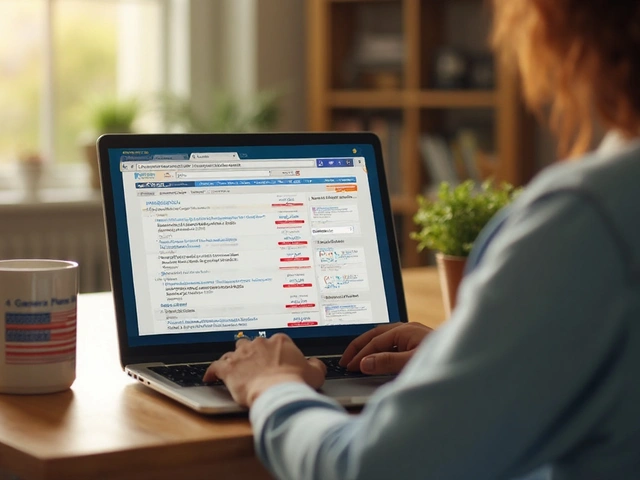Switching from a brand-name drug to a generic version can save you hundreds of dollars a year. But what if you start feeling different after the switch? Maybe your pain isn’t as controlled, your mood dropped, or you’re getting dizzy when you didn’t before. You’re not imagining it. Thousands of people experience subtle but real changes after switching generics - and the key to understanding why is keeping a medication journal.
Why Your Body Might React Differently to Generics
< p>Generic drugs are required by the FDA to be bioequivalent to their brand-name counterparts. That means they deliver the same active ingredient at the same strength and should work the same way. But bioequivalence doesn’t mean identical. The FDA allows generics to vary by up to 20% in how quickly they’re absorbed into your bloodstream. For most people, that’s no big deal. But for those on narrow therapeutic index (NTI) drugs - like warfarin, levothyroxine, or seizure medications - even small differences can cause problems.One patient switched from Synthroid to a generic levothyroxine after her insurance changed. Her TSH levels jumped from 1.2 to 8.7 over six months - even though she took the same dose. Her endocrinologist didn’t believe it until she showed her journal: exact dates, manufacturer names, lot numbers, and daily symptoms. That journal led to her switching back to the brand - and her numbers stabilized within weeks.
It’s not just about the active ingredient. Generics can have different fillers, dyes, or coatings. These don’t affect how the drug works in theory - but in practice, they can change how your body reacts. One man with epilepsy had breakthrough seizures after switching from one generic manufacturer to another. His doctor dismissed it as coincidence. Then he pulled out his journal: three seizures in 11 days, all starting within 48 hours of switching to a new batch with a different imprint code. That pattern didn’t lie.
What to Track in Your Medication Journal
A good medication journal isn’t just a list of pills you took. It’s a detailed record of how your body responded. Here’s what matters most when tracking generics:
- Medication name - Write down both the brand name and generic name. Don’t assume you’ll remember which is which later.
- Manufacturer - Different companies make the same generic. Record the name on the bottle (e.g., Teva, Mylan, Dr. Reddy’s).
- Lot number - Found on the bottle or blister pack. This is critical if there’s a recall or if your symptoms match others who used the same batch.
- Physical appearance - Color, shape, scoring, imprint code. If your pill looks different, write it down. Thirty-three percent of patients report confusion or anxiety when their pills change appearance - even if the drug is the same.
- Dosage and timing - Did you take it with food? At what time? Did you miss a dose? Note why.
- Symptoms - Use a simple 1-10 scale. Rate pain, fatigue, anxiety, nausea, sleep quality. Don’t say “I felt bad.” Say “Headache: 7/10, started 2 hours after pill, lasted 4 hours.”
- Objective data - If you monitor blood pressure, blood sugar, INR, or TSH, record those numbers. For NTI drugs, these are your most reliable indicators.
- Date of switch - Mark the exact day you switched manufacturers. Symptoms often appear within 24-72 hours.
Don’t overcomplicate it. You don’t need to write a novel. Just 2-3 minutes a day, right after you take your pill, is enough.
Paper vs. Digital: Which Works Better?
Some people swear by a notebook. Others prefer apps. Both work - if you stick with them.
Paper journals are simple, reliable, and don’t need batteries. The CDC offers free printable templates with tear-off sheets for doctor visits. Many older adults prefer this method. In fact, 62% of patients over 65 still use paper, according to AARP’s 2022 survey. You can buy a pack of 100 perforated sheets for under $5.
Digital tools like Medisafe and MyTherapy offer reminders, charts, and the ability to export data directly to your doctor’s office. Medisafe has a 4.7/5 rating with over 150,000 reviews. MyTherapy is used by 8 million people worldwide. But here’s the catch: 41% of people who start using apps quit within three months because they forget to log in or find it too slow.
The best approach? Start with paper. Get used to the habit. Then, if you’re comfortable, try an app. Many people find that combining both - writing in paper during the day and transferring entries to an app once a week - keeps them consistent.
When Journaling Makes the Biggest Difference
Not every medication needs this level of tracking. But for these, it’s essential:
- Antiepileptics - A 2020 study found 7.3% of patients had breakthrough seizures after switching generic manufacturers. That’s 6 times higher than when they stayed on the same brand.
- Thyroid meds (levothyroxine) - Small changes in absorption can throw off your TSH levels, leading to fatigue, weight gain, or heart palpitations.
- Warfarin - A 5% change in absorption can mean the difference between a dangerous clot and a dangerous bleed.
- Immunosuppressants - After heart or kidney transplants, even tiny variations can trigger organ rejection. Cleveland Clinic documented cases where patients ended up in ICU after switching to a new generic tacrolimus.
- Antidepressants and anti-anxiety meds - While most people don’t notice differences, some report sudden mood shifts, insomnia, or brain zaps. Journaling helps determine if it’s the drug - or something else.
For medications like statins or blood pressure pills, journaling can still help - but the impact is usually smaller. Still, if you’re switching manufacturers every few months because of insurance changes, tracking helps you spot patterns.
How to Use Your Journal With Your Doctor
A journal is useless if you don’t share it. Bring it to every appointment. Don’t wait for a crisis.
Studies show patients who bring medication journals to visits have 32% fewer unnecessary medication changes and 27% higher adherence rates. Why? Because doctors trust data more than stories.
Here’s how to present it:
- Highlight the date you switched manufacturers.
- Show the symptom trend - “Pain went from 3/10 to 8/10 starting this week.”
- Point out the lot number and manufacturer name.
- Ask: “Could this be the generic?”
Pharmacists are your allies, too. Kaiser Permanente’s program showed pharmacist-led journal reviews reduced generic-related medication changes by 44%. Ask your pharmacist to review your journal during your refill visit.
The Limits of Journaling
Journaling isn’t magic. It won’t fix everything.
First, most generic switches cause no problems. The FDA says 90% of patients see no difference. Journaling helps you spot the 10% who do - not create anxiety over normal variation.
Second, some medications take weeks to show effects. If you’re on an antidepressant, don’t expect to see changes in 48 hours. Journaling works best for drugs that act quickly: painkillers, blood pressure meds, seizure drugs.
Third, people often misinterpret normal fluctuations. A 2019 study found 22% of journalers thought minor symptom changes meant the drug wasn’t working - and went to the ER unnecessarily. That cost an average of $187 per visit. Use your journal to spot patterns, not single bad days.
What’s Next for Medication Tracking
The system is slowly changing. In 2023, the FDA launched a pilot with Apple Health to add standardized generic tracking templates to iPhones. The Generic Pharmaceutical Association now puts QR codes on pill bottles that link to bioequivalence data. Epic Systems rolled out “MyJournal” in 2024, letting patients upload tracking data directly to their EHR.
But the biggest breakthrough? Real-world data from patients. Between 2020 and 2023, 142 cases of adverse events were caught because of patient journals - leading to manufacturer alerts and label changes.
As generics make up 95% of prescriptions by 2027, your journal won’t just be helpful - it could become essential.
Start Today - One Pill, One Entry
You don’t need to be perfect. You don’t need fancy tools. Just pick one medication you’re on - maybe the one you take daily - and write down:
- What it is
- Who made it
- How you felt today
Do it for seven days. If nothing changes? Great. You’ve confirmed the generic works. If something shifts? You’ve got proof. And that proof gives you power - to talk to your doctor, to switch back, or to demand a consistent manufacturer.
Generics save money. But your health? That’s priceless. A simple journal is the cheapest, most powerful tool you have to protect it.
Do I need to track every generic medication I take?
No. Focus on drugs with a narrow therapeutic index - like thyroid meds, blood thinners, seizure drugs, and immunosuppressants. For others, like statins or basic antibiotics, journaling is optional unless you notice a clear change after switching.
What if my insurance keeps switching my generic manufacturer?
Keep tracking. If you notice a pattern - say, every time you get a Teva pill, your headaches return - show your journal to your doctor. They can write a “do not substitute” note on your prescription. Some states allow this for NTI drugs. Your pharmacist can also help you find a manufacturer your insurance covers that you tolerate well.
Can I use a free app or spreadsheet instead of buying a journal?
Absolutely. Many people use Google Sheets or Excel with columns for date, drug name, manufacturer, symptoms, and notes. Free apps like Medisafe and MyTherapy are reliable and offer reminders. The key isn’t the tool - it’s consistency. Choose the method you’ll actually use every day.
How long should I track before deciding if a generic isn’t working?
For most medications, track for at least 2-4 weeks after switching. For NTI drugs, aim for 6-8 weeks. Some effects take time to show up. But if you notice a sudden, clear change within 72 hours of switching - that’s a red flag. Don’t wait. Document it and call your doctor.
Are there templates I can download to make this easier?
Yes. The Cleveland Clinic offers a free NTI Medication Tracking Form. The Epilepsy Foundation has a seizure and medication tracker. The CDC also has printable templates. Search for “narrow therapeutic index medication journal PDF” - you’ll find several trusted options.
2 Comments
Roberta Colombin
November 18 2025
Thank you for sharing this important information in such a clear way.
Many people don't realize how much variation exists between generic manufacturers.
Keeping a simple journal is one of the most powerful tools patients have.
It's not about distrust-it's about partnership with your care team.
Even just writing down the color and shape of your pill each day can make a difference.
Small habits lead to big safety wins.
You're helping others feel seen and heard.






Noel Molina Mattinez
November 17 2025
I switched to generic lisinopril and my face swelled up like a balloon
Called my doctor he said it was coincidence
Turns out it was the dye in the pill
Now I only take the blue ones